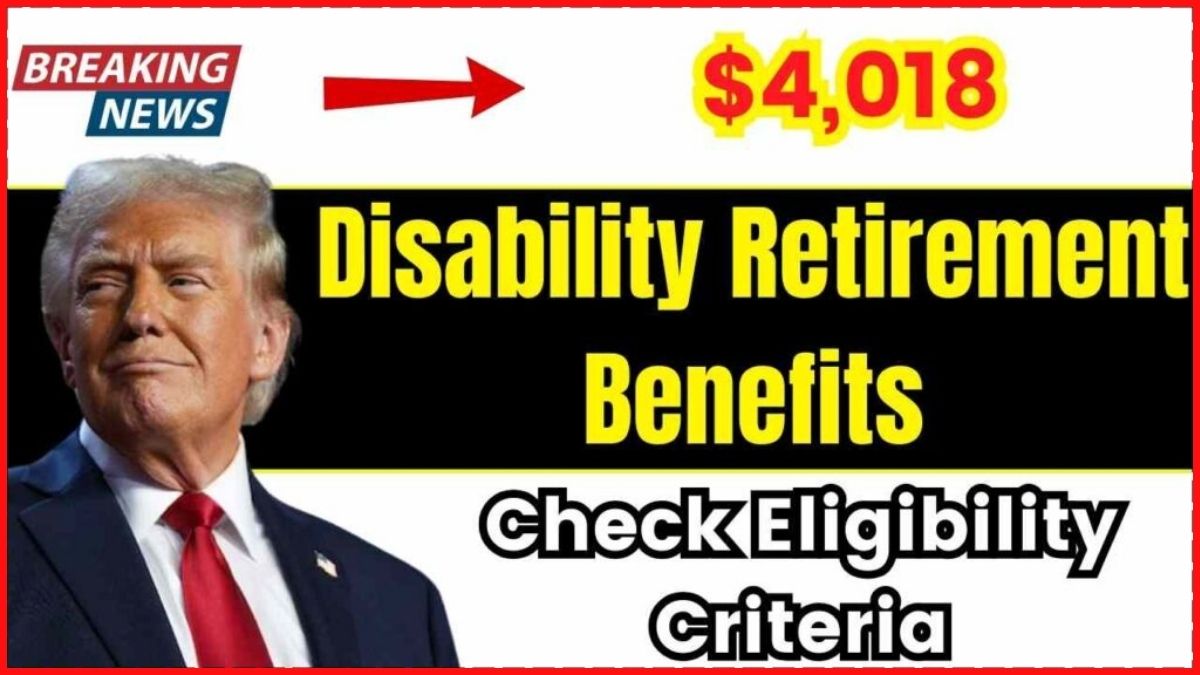Social Security Disability Insurance (SSDI) offers a vital safety net for millions of individuals who can no longer work due to a disability. In 2025, the SSDI program provides monthly payments of up to $4,018, offering crucial financial support for those who meet the eligibility requirements. However, navigating the SSDI system can be complex, and understanding the application process, eligibility criteria, and the potential challenges you may face is essential to securing your benefits. In this article, we break down the key aspects of SSDI benefits, including how to qualify, apply, and what to do if your application is denied.
What Are SSDI Benefits?
SSDI is a federal program that provides financial assistance to individuals who are unable to work because of a disability. The amount of benefits you may receive depends on your lifetime earnings and the amount of Social Security taxes you’ve paid into the system. SSDI benefits are meant to replace a portion of your income if you become disabled and are unable to maintain gainful employment.
Maximum SSDI Benefit for 2025
In 2025, the maximum SSDI benefit is $4,018 per month. However, most recipients do not qualify for this maximum amount. The average monthly SSDI payment is closer to $1,537, with the highest benefits typically going to individuals who had high-income careers before becoming disabled.
Eligibility Criteria for SSDI Benefits
To qualify for SSDI, there are specific criteria that applicants must meet. These criteria mainly involve your work history, the severity of your disability, and how much you earn.
1. Work Credits
Social Security requires that you have worked in jobs covered by Social Security and earned enough work credits to qualify. Work credits are earned based on your income and taxes paid into the system.
- Typically, you need to have worked for at least five out of the last ten years before becoming disabled.
- Younger individuals may qualify with fewer credits, depending on their age at the time of disability.
2. Qualifying Disability
To be eligible for SSDI benefits, your condition must meet the Social Security Administration’s (SSA) definition of disability. To meet this standard, you must demonstrate:
- You cannot perform the work you did before your disability.
- You cannot adjust to other types of work due to your condition.
- Your disability is expected to last for at least one year or result in death.
3. Substantial Gainful Activity (SGA) Limit
In 2025, if you earn more than $1,620 per month from work, you will generally not be considered disabled under SSDI rules. This limit is designed to ensure that SSDI is a program for individuals who are truly unable to engage in substantial work due to a disability.
For a full list of qualifying conditions, you can refer to the SSA’s Blue Book, which provides detailed information on what constitutes a qualifying disability.
How to Apply for SSDI Benefits in 2025
Applying for SSDI benefits is a multi-step process. Below are the key steps involved:
1. Gather Necessary Documents
Before you start your SSDI application, gather the following documents:
- Personal Information: Social Security number, birth certificate, and other identifying details.
- Medical Records: Details about your diagnosis, treatment history, and contact information for your healthcare providers.
- Work History: A list of jobs you’ve held in the last 15 years.
- Financial Information: W-2 forms or federal tax returns if you were self-employed.
2. Submit Your Application
You can apply for SSDI in one of three ways:
- Online: Visit the SSA’s official website at SSA.gov to submit your application online.
- By Phone: Call 1-800-772-1213 to apply by phone.
- In Person: Schedule an appointment at your local Social Security office to apply in person.
3. Wait for Processing
After submitting your application, it typically takes three to five months for the SSA to process your claim. In some cases, additional documentation may be needed, which could extend the processing time.
4. Receive a Decision
Once your claim has been processed, the SSA will mail you a letter informing you of their decision. If approved, your SSDI benefits will begin after a five-month waiting period.
What to Do If Your SSDI Claim Is Denied
Unfortunately, SSDI claims are often denied, with around 67% of first-time applications being rejected. Common reasons for denial include insufficient medical evidence, earnings exceeding the SGA limit, or incomplete applications. If your claim is denied, there is an appeals process you can follow.
Four-Step Appeals Process
- Reconsideration: You can request a review of your claim with additional evidence.
- Hearing with an Administrative Law Judge (ALJ): If reconsideration is unsuccessful, you can request a hearing before an ALJ who will review your case and hear testimony.
- Appeals Council Review: If the ALJ denies your claim, you can ask the Appeals Council to review the case.
- Federal Court Review: As a final option, you can take your case to a federal district court.
Most successful appeals occur at the hearing stage, so persistence is key to getting your claim approved.
How SSDI Works with Other Retirement Benefits
When you reach your full retirement age (FRA), your SSDI benefits automatically convert to regular Social Security retirement benefits. Your monthly payment amount remains the same, but the classification of the benefit changes.
Can You Receive SSDI and SSI?
If your SSDI benefit is low, you may also be eligible for Supplemental Security Income (SSI). SSI is a needs-based program that provides additional support to individuals with limited income and resources.
Medicare and Medicaid Benefits
After 24 months of receiving SSDI, you automatically qualify for Medicare. If you have limited income, you may also qualify for Medicaid, which provides additional health coverage.
Additional Disability Benefits and Assistance Programs
Apart from SSDI, you may be eligible for other disability-related assistance programs, depending on your circumstances:
- State Disability Insurance (SDI): Some states, like California, offer short-term disability benefits to individuals who are temporarily unable to work due to a disability.
- Veterans Disability Benefits: If you are a veteran, you may qualify for disability benefits through the Department of Veterans Affairs (VA).
- Long-Term Disability Insurance (LTD): If you have private LTD insurance, you may receive additional benefits alongside SSDI.











